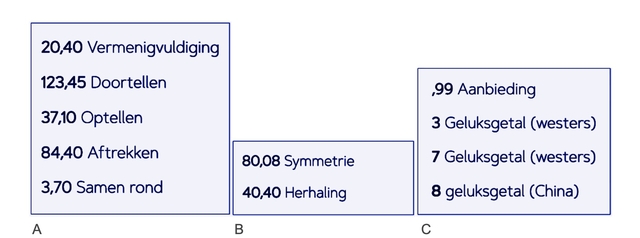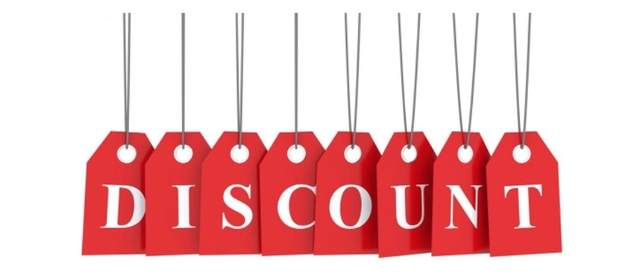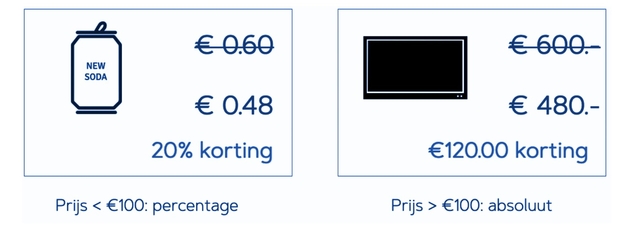
For the vast majority of human history, there was no money, but trade existed. A cow for two sheep and some grain for a chicken. For this reason, the concept of money is very unnatural for our brain.
In our brains, spending money and even seeing prices can cause pain. The insula, the brain area that plays an important role in negative emotions and pain processing, shows similar activity when hitting your thumb with a hammer as when seeing a price.
Trouwens, laatst gaven we een - gratis - lunch-webinar precies hierover. In dit webinar onthulden Tim en Tom de laatste psychologische en neuromarketing-inzichten over effectief prijsdesign.
Aangezien je dit blog leest, dachten we dat je deze webinar helemaal mooi zal vinden! Terugkijken kan heel simpel via deze link. Ik ben benieuwd wat je ervan vindt!
Price means pain, and you can consider pricing psychology as the anaesthesia against it. Subtle changes to the price number, design, and context can make a big difference in price perception when the customer is at the shelf. In this blog, I will show, based on three practical insights from psychology, how you can soften the pain of a price as much as possible.
Do you want to know specifically if your product is brain-friendly priced? Our research shows that many brands leave revenue on the table because traditional research methods often underestimate the optimal price point as they overlook the unconscious price acceptance in the customer's brain.
Curious how that works? Check out our Neuro Pricing solution.
The Secret to a Pleasant Price
To begin with, you can make a price more pleasant by ensuring it is easy to process. This is known as the concept of ‘price fluency’. If something is easy to process, we see that it leads us to more quickly decide to buy something. There are several factors that make a number easier for our brain to process.
Price Fluency
The first factor behind easily processable numbers is that the price follows a logical numerical sequence. €20.40 is easier to process than €20.30, simply because there is a visible logical sequence of numbers (in this case a doubling). There are numerous techniques that give the individual numbers within the price a logical coherence. You can find the most common ones shown in image 1A.
Symmetry
Secondly, symmetry also works well as a fluency factor. Think of a precisely symmetrical number or a number with repetition as in image 1B. Simple but effective: €84.48 provides a more pleasant price feeling than the more complex €84.37.
Embedded Associations
Thirdly, fluency can also arise from so-called embedded associations. These are numbers that we can simply process more easily because we see them more often in our daily lives. Think of offers or lucky numbers as in image 1C.

Image 1
Focus & Frame
A completely different strategy to soften price pain is to unconsciously shift the customer's focus from the price to the positive aspects of the product. You can do this by changing a few simple aspects of the price design. It turns out that people already experience price pain just by seeing currency symbols (€ $ £). A simple solution for this is to omit the currency symbol before the price. However, be careful with this and only do it if it is clear that the standalone number is the price of the product.
A second design aspect that can reduce the focus on the price is the price length. The shorter, the better. Suppose you want to sell a TV valued at 650 euros. If you see €650.00 on the price tag, the price focus will be slightly higher than just €650,- (without decimals). In this way, the price focus is relatively much lower.
Another way in which price length influences price pain lies in the length of the word. 'The shorter, the better' becomes 'the fewer syllables, the better' in this case. Instead of €1.17 (one-eu-ro-se-ven-teen), you make it €1.18 (one-eu-ro-eight-teen). This is one syllable shorter. It's very simple but has a subtle yet significant positive effect on the degree of price focus.
Framing
Now that the focus is off the price, there is yet another aspect you can apply to soften the price pain. The framing of a price can also make a big difference. In other words: in what context you place the price. Imagine a brand of crisps with several different flavours.
For example: paprika, plain, and BBQ. These flavours will be placed together both in the store and online, and thus they potentially have mutual influence on the price perception of surrounding products.
If all these flavours had the same price, it turns out that consumers have more difficulty making a choice. And as we discussed earlier: the more effort for the consumer, the less chance of a sale. So, do not price similar products identically, but let them differ slightly in price. For example: plain €1.32, paprika €1.35, and BBQ €1.39. In this way, the consumer's choice process is aided not only by taste differences but also by subtle price differences. One customer always chooses the middle option, another prefers the cheapest option, and another will prefer a bit more luxury and choose the most expensive option. This ease of choice has an important positive effect on the entire category: the number of customers who decide to leave the shelf empty-handed due to choice stress becomes smaller.
Another way to make the price feel less painful through context is anchoring. This means that you increase the mental reference price, the price the customer expects the product to cost, by adding an expensive product. By expecting a more expensive price for the other products, a previously average price suddenly feels like a bargain. For this reason, place the most expensive wine at the top of a wine list. This sets the standard, and the wines below can only feel cheaper.
Deal Value
Prices can also have a positive side: deals. But what can you do psychologically to maximise the feeling of deal value?
If there is one thing people do not like, it is the feeling of regret. Missing out on a deal will give that feeling of regret. This emotion turns out to be the driving force behind the fact that deals work so well. If I don't buy it now, I will miss the deal later.
It turns out that with deals, it's not just about the economic price reduction. Simply putting up "discount!" or "on sale" signs – without a very significant discount – already prompts people to buy something faster. It really is about the feeling of a deal, rather than that 5-cent price reduction.

Don't focus solely on the economic leap of a discount, but especially look at what you can do to increase the psychological leap. In other words: how big a discount feels as opposed to how big this discount actually is. There are several ways to make a discount feel as large as possible.
Firstly, there is the rule of 100. First, look at the value of the discount and then determine whether you communicate the discount in percentage or absolute terms. The rule of thumb for this is simple. If the price is under €100, communicate it in percentage. If the price is over €100, communicate it in absolute value as in image 2. This way, our brain always processes the highest possible discount feeling.

Unravel Academy
Do you want to learn more about pricing psychology and neuromarketing? Then sign up for Unravel Academy and follow the Neuromarketing Retail Training by Unravel Research. A full lesson is dedicated to the psychological effects of pricing in this training. This training is available online and covers the latest psychological insights of every aspect of retail.
- Over 18 hours of video material
- Always access to the content
- Certificate
- Rate: €970 excl. VAT -






